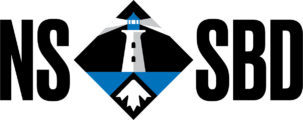Nova Scotia Snowboard offers events in 3 different snowboard disciplines
1) Snowboardcross (SBX)
In Snowboardcross (SBX), riders race down a specially designed boardercross course with banks, rollers and jumps in heats of up to four to compete for the fastest time.
The Snowboardcross Course:
Boardercross courses are typically narrow courses which are approximately one kilometre in length and have a vertical drop of 200 metres. They include many features such as banked turns, gap jumps, berms, drops and flat sections to challenge the riders’ ability to remain in control.
How Snowboardcross is Judged:
Boardercross riders race individually in timed runs for qualifications, with their best one of two runs counting. The riders with the fastest times progress to finals where athletes race in groups of four, with the two fastest racers from each heat moving on to the next round.
Differences for Groms:
Grom riders race down the same boardercross course in individual timed runs, but do not race in multiple rider heats. Results are determined by the riders fastest timed run.
2) Giant Slalom (GS)
In Giant Slalom (GS), riders race down a course turning through a series of gates.
The Giant Slalom Course:
The Giant Slalom course consists of gates that riders must turn around. The course typically has a vertical drop between 120 and 200 metres and is 400–700 metres in length, with a minimum of 18 gates. Gates are set up with a distance of approximately 20 to 25 metres between each one.
How Giant Slalom is Judged:
Riders are timed individually each run. Riders have two or three runs each, with their best time being used. The fastest time wins.
Differences for Groms:
Grom riders use the same course and are timed the same as provincial riders.
3) Slopestyle (SS)
In Slopestyle (SS), riders ride down a course with various rails, boxes and jumps performing tricks to receive the highest score.
The Slopestyle Course:
A Slopestyle competition takes place in a resorts terrain park. There is a mix of jump and rail features that riders hit. A slopestyle course is split up into multiple sets of features. Each set has two or more features for the rider to choose from. a course will have a minimum of four sets of features, two sets of rails and two sets of jumps.
How Slopestyle is Judged:
In Slopestyle there is a panel of judges that score each riders run out of 100. Riders are scored on multiple factors including the difficulty of their tricks, their amplitude (height), their execution (if they land), their variety (not doing the same trick), and their flow. The rider gets three runs, and their best score is used. The highest score wins.
Differences for Groms:
Grom riders may use the same course as provincial riders, or may have their own course depending on the terrain park setup of the resort. Grom riders will generally have smaller features and will be scored more generously than provincial series riders.
